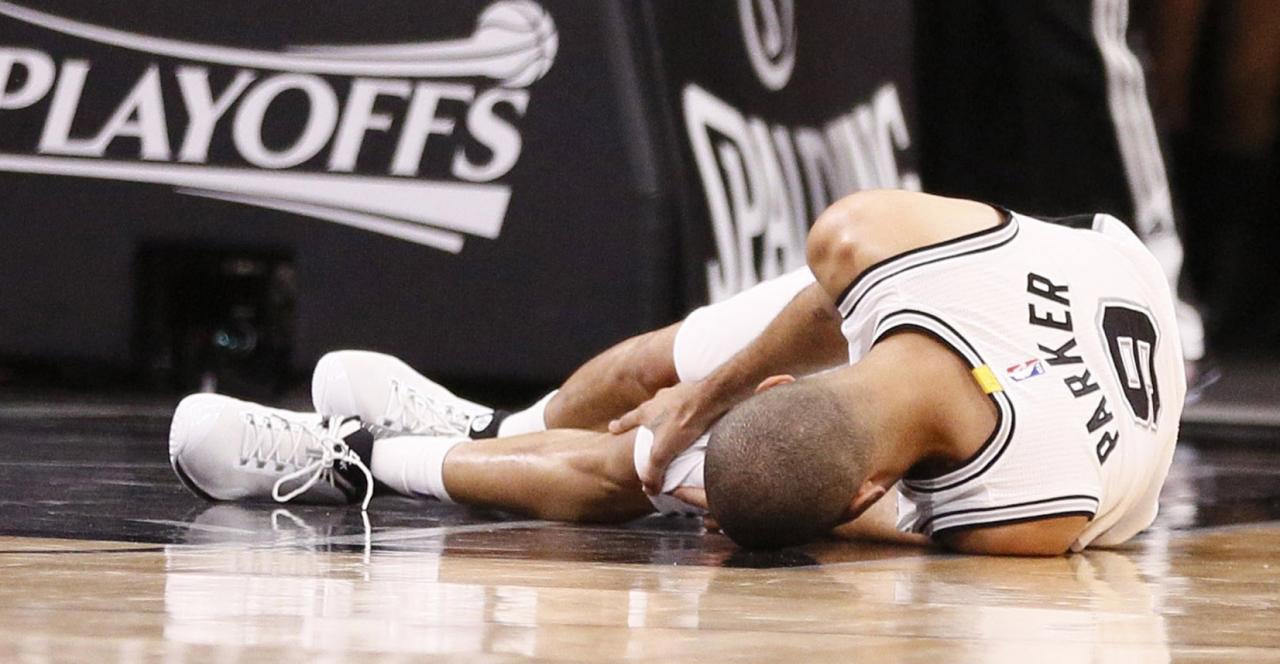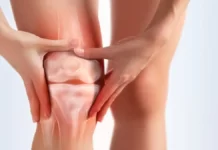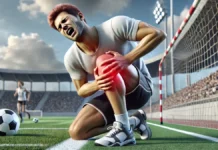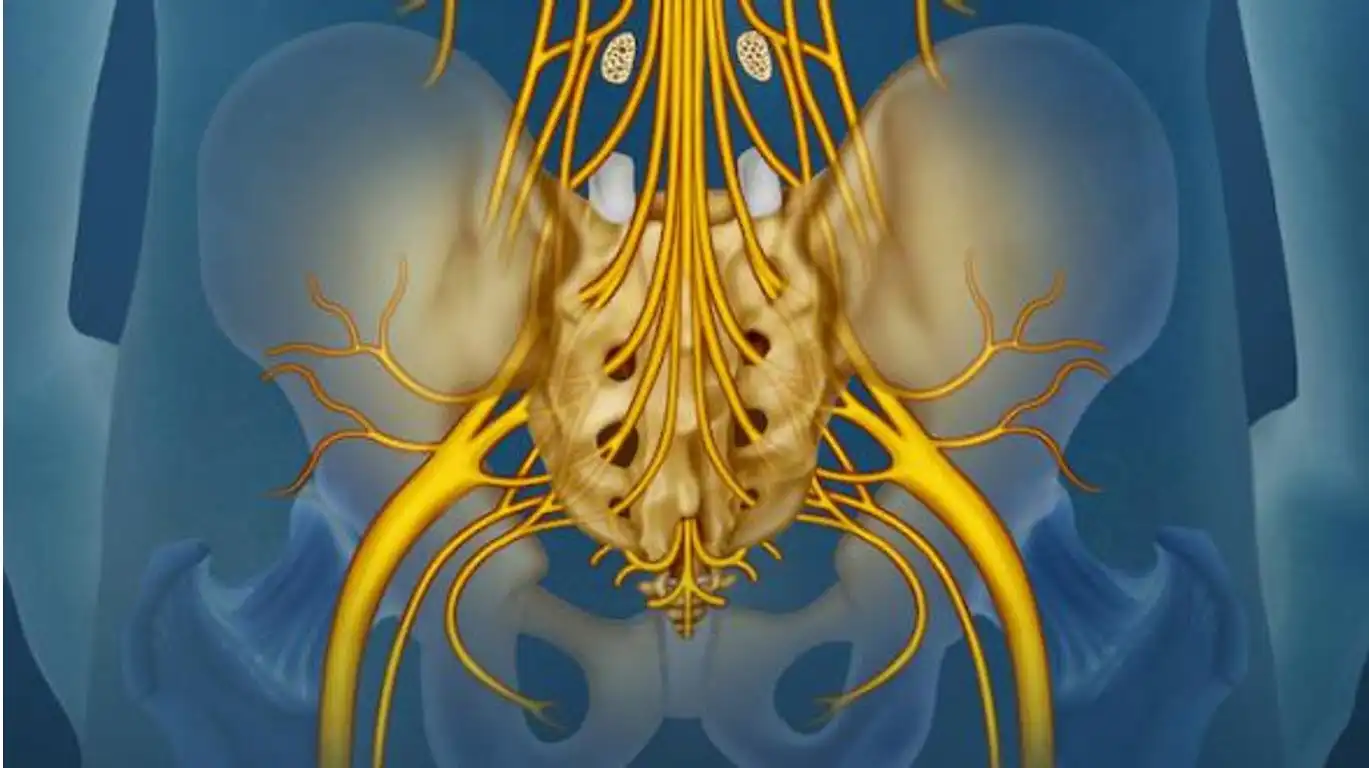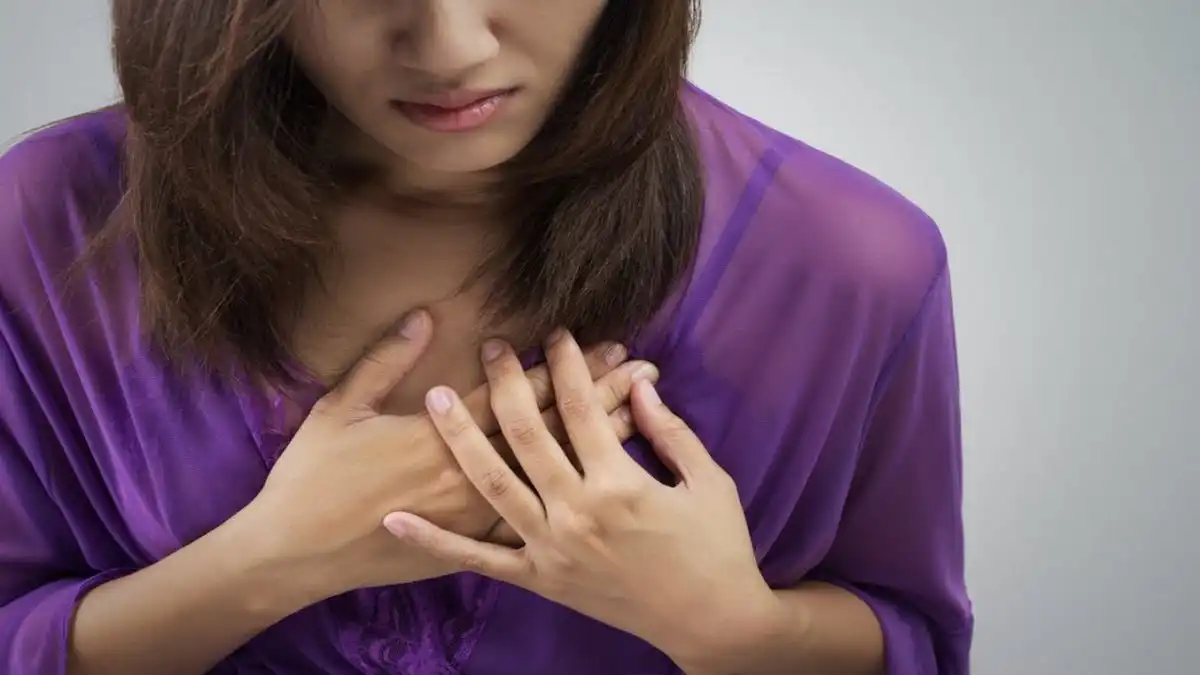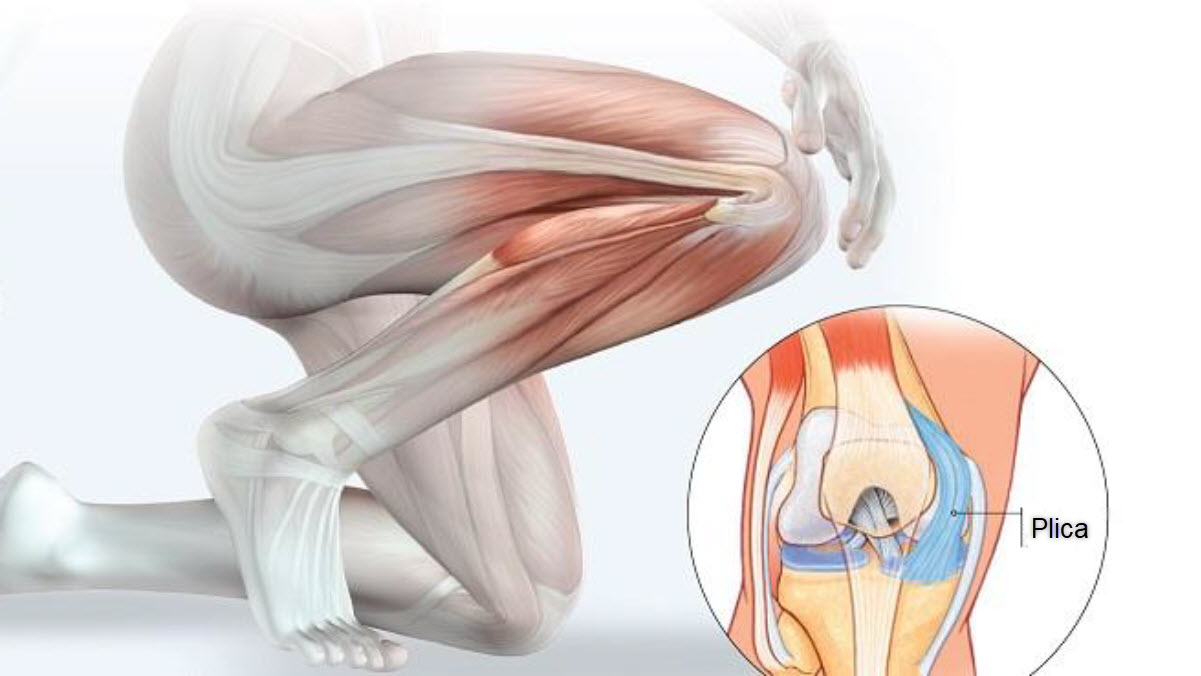Introduction
A ruptured quadriceps tendon is a severe injury that usually occurs during a fall onto a partially bent knee. During this incident, the sudden contraction of the quadriceps muscle to cushion the impact of the fall can overload and rupture the quadriceps tendon.
This injury, although relatively rare, is more common in men over the age of 40. It can cause significant disability, leading to substantial loss of time in sports and work activities. Without proper treatment, a ruptured quadriceps tendon can leave long-term consequences.
The most common area of rupture is at the insertion of the quadriceps tendon to the patella. This break can cause the kneecap to move downward, a condition known as “patella baja.” This phenomenon adds complexity to the injury, further compromising knee function.
Initial treatment for a ruptured quadriceps tendon often involves surgery to repair the rupture and restore normal function to the tendon. Postoperative rehabilitation is crucial, aimed at strengthening the quadriceps muscle and restoring knee mobility. Regular medical monitoring is necessary to assess the progress of healing and adjust the treatment plan.
In addition to the physical implications, a rupture of the quadriceps tendon can have significant psychological repercussions. Frustration with limitations in daily activities and the need for temporary adaptations can contribute to emotional impacts.

The image shows the rupture of the quadriceps tendon, which connects the quadriceps muscle to the patella (kneecap).
The rupture typically occurs at the point where the tendon attaches to the patella.
The femur and tibia bones are also depicted to illustrate the knee joint’s structure.
Causes of quadriceps tendon rupture
Quadriceps tendon rupture, a debilitating injury, often has its origins in a variety of factors, contributing to tendon overload and failure. One of the main causes is usually a sudden fall onto a partially bent knee. During this type of fall, the body’s natural reflex is to quickly contract the quadriceps muscle to cushion the impact. However, this sudden contraction can cause excessive overload of the quadriceps tendon, potentially leading to its rupture.
Age is also a determining factor, with quadriceps tendon rupture being more common in men over the age of 40. With aging, connective tissues, including tendons, can undergo structural changes and a decrease in elasticity, increasing the risk of rupture if overloaded.
A history of injury or trauma to the knee may also be an underlying cause. Previous incidents, such as sports injuries, accidents, or direct impacts to the knee, can weaken the quadriceps tendon, making it more likely to rupture in future events.
Pre-existing medical conditions, such as arthritis, can also increase the vulnerability of the quadriceps tendon. Chronic inflammation associated with arthritis can affect the quality of the tendon, making it less resistant to stress, and thus increasing the risk of rupture.
Furthermore, excessive or inappropriate use of the muscles can contribute to the occurrence of a rupture of the quadriceps tendon. Intense physical activities, especially when the muscles are not properly warmed up, can cause the tendon to overload. Likewise, repetitive movements or excessive loads can gradually weaken the tendon, making it more likely to fail under pressure.
- Acute trauma: Direct trauma to the knee, such as a sudden fall onto the outstretched knee, a violent impact, or a direct blow, can cause a rupture of the quadriceps tendon.
- Violent muscle contractions: Sudden and excessive muscle contractions, often associated with a fall or sudden movement, can exert excessive force on the quadriceps tendon, causing it to rupture.
- Age-related tendon weakening: As we age, tendons tend to lose their elasticity and strength, which can increase the risk of rupture, especially in older people.
- Tendinopathy: Pre-existing tendinopathy, characterized by progressive degeneration of the tendon, can increase the vulnerability of the quadriceps tendon to rupture.
- Use of corticosteroids: Corticosteroids, used long-term to treat certain inflammatory conditions, can weaken tendons and increase the risk of rupture.
- Underlying medical conditions: Certain illnesses, such as rheumatoid arthritis, diabetes, and other autoimmune conditions, can affect the health of tendons and contribute to their rupture.
- Previous knee surgery: People who have had previous knee surgery may be more likely to develop a quadriceps tendon rupture due to changes in the structure and function of the knee.
- Obesity: Being overweight puts additional pressure on tendons and joints, increasing the risk of quadriceps tendon rupture.
- Poor training techniques: Improper exercises, sudden overload, or poor training technique can contribute to quadriceps tendon rupture, especially in people engaged in strenuous physical activities.
- Genetic factors: Some individuals may be genetically predisposed to conditions affecting the tendons, which can increase the risk of rupture.
Symptoms of quadriceps tendon rupture
Symptoms associated with quadriceps tendon rupture are characteristic and often indicative of the severity of this debilitating injury. One of the most obvious signs is severe pain felt in the knee, especially at the site of the rupture. This pain may be sharp and immediate at the time of injury, followed by a persistent feeling of discomfort and pain, even at rest.
Another prominent symptom is the immediate loss of strength and function in the affected lower limb. Individuals with a ruptured quadriceps tendon may have difficulty fully extending the knee and bearing weight on the affected leg. Muscle weakness is often palpable and contributes to impaired gait, with a preference to avoid loading the affected knee.
Significant swelling around the knee can also accompany rupture of the quadriceps tendon. This swelling is usually the result of an inflammatory reaction to the injury, with fluid accumulating in the affected area. The feeling of warmth and tension in the swollen area is commonly reported by affected individuals.
Another common manifestation is the presence of a palpable gap or depression above the kneecap. This deficiency is often visible and palpable, creating an obvious deformation in the quadriceps. This anatomical alteration is the result of detachment of the quadriceps tendon, causing the patella to pull upward, a condition known as “patella alta.”
Symptoms of a ruptured quadriceps tendon may also be accompanied by unusual sounds or sensations at the time of the injury. Some individuals report hearing or feeling a cracking sound when they break, while others describe a tearing or tearing sensation in the knee area.
In addition to physical symptoms, the injury can have psychological impacts, with feelings of frustration, anger and anxiety related to the sudden limitation of daily activities and the need for temporary adaptations.
In conclusion, the symptoms of quadriceps tendon rupture are varied and include severe pain, loss of strength and function, swelling, palpable depression above the kneecap, and unusual sensations at the time of injury. A thorough understanding of these symptoms is crucial for early diagnosis and implementation of appropriate management aimed at promoting optimal recovery.
- An indentation at the top of the kneecap where the tendon has torn
- Bruising
- Pain when touched
- Cramps
- A drooping or drooping kneecap where the tendon is torn
- Inflammation
- Unable to achieve knee extension
- Difficulty walking due to knee giving way
- Fault at the upper pole of the patella less than 2 cm from the patella
Pathophysiology of quadriceps tendon rupture
The pathophysiology of quadriceps tendon rupture provides complex insight into the mechanisms underlying this debilitating injury. This condition often results from a combination of traumatic forces and predisposing factors, contributing to tendon overload and failure.
At the heart of the pathophysiology is the acute trauma caused by a sudden fall onto a partially bent knee. During this event, the sudden and powerful contraction of the quadriceps muscle in response to the fall results in significant overload of the tendon, often to the point of rupture. The violence of this contraction, combined with the particular position of the knee at the time of the fall, creates significant stress on the quadriceps tendon.
Age is emerging as a crucial predisposing factor in the pathophysiology of quadriceps tendon rupture. This injury is more common in individuals over the age of 40, and this is partly attributable to structural changes associated with aging. The decrease in tendon elasticity with age increases the vulnerability of the quadriceps tendon to rupture when subjected to excessive stress.
History of knee injuries or pre-existing trauma may also play a role in the pathophysiology of this rupture. Pre-existing alterations in the structure or function of the quadriceps tendon can weaken its strength, making it more likely to fail under the impact of a traumatic force.
Underlying medical conditions, such as arthritis, may contribute to the pathophysiology of quadriceps tendon rupture. Chronic inflammation associated with arthritis can alter the quality of the tendon, making it less resilient and more prone to injury during traumatic events.
At the same time, anatomical anomalies or alterations in the biomechanical mechanisms of the knee can also play a role in the pathophysiology. Poor force distribution, alignment abnormalities or muscle imbalances can contribute to overloading the quadriceps tendon, increasing the risk of rupture.
In conclusion, the pathophysiology of quadriceps tendon rupture is multifactorial, resulting from a complex interaction between acute traumatic forces and predisposing factors, such as age, injury history, underlying medical conditions, and biomechanical abnormalities. A thorough understanding of these mechanisms is essential to guide the prevention and clinical management of this debilitating injury.
- Excessive tension: Rupture of the quadriceps tendon usually occurs when it is subjected to sudden excessive tension. This can result from direct trauma to the knee, violent muscle contraction, or a combination of these factors.
- Prior Weakening: In some cases, the tendon may be previously weakened due to tendinopathies (tendon degeneration), age, prolonged use of corticosteroids, systemic illnesses, or other medical conditions.
- Excessive load: When the tendon is subjected to a load beyond its mechanical capacity, it can rupture. This can occur during intense sporting activity, a sudden movement, or even during normal daily activity.
- Rupture site: Rupture of the quadriceps tendon can occur in different locations, but it most commonly occurs at the tendon insertion on the patella. This is where the tendon is put under significant stress during knee extension.
- Inflammatory reaction: The rupture causes a local inflammatory reaction, with the release of inflammatory substances. This leads to pain, swelling and warmth in the affected area.
- Hematoma: Rupture of the tendon can cause small blood vessels to rupture, causing a localized hematoma. This contributes to swelling and reddish or bluish coloring of the affected area.
- Muscle retraction: After rupture, the muscle fibers of the quadriceps can retract, leading to significant muscle weakness and limited knee function.
- Scar Formation: Over time, the healing process begins. Scar formation can lead to fusion of the torn edges of the tendon, but the quality of the scar will usually not be as strong as the original tendon.
Management of quadriceps tendon rupture
The management of quadriceps tendon rupture requires a multidimensional approach, combining medical, surgical and rehabilitation intervention, in order to promote optimal recovery and minimize potential after-effects. The management of this complex injury revolves around several crucial steps.
In most cases, surgery is necessary to repair the quadriceps tendon. Surgery aims to restore the integrity of the tendon by suturing the ruptured ends. This step is essential to restore the anatomical continuity of the tendon and promote optimal healing.
After the surgical procedure, an intensive rehabilitation phase is essential. The rehabilitation process aims to restore muscle strength, flexibility and function to the knee. Targeted exercises include knee flexion and extension, gradually strengthening the quadriceps. Regular follow-up with a physiotherapist is essential to adapt the rehabilitation program according to the patient’s progress.
Pain management is a crucial aspect throughout the recovery process. Painkillers may be prescribed to alleviate post-operative pain, making it easier for the patient to participate in rehabilitation sessions. Careful pain management also helps improve the patient’s quality of life during the recovery period.
Regular medical monitoring is essential to assess the progress of healing and adjust the treatment plan accordingly. Imaging tests, such as ultrasound or MRI, can be used to evaluate the integrity of the repaired tendon and detect possible complications. Close follow-up with the orthopedic surgeon allows the stability of the knee to be monitored and informed decisions to be made regarding the gradual return to activities.
Preventing complications, such as joint stiffness or persistent weakness, is a key aspect of managing quadriceps tendon rupture. Prevention strategies include carefully following rehabilitation recommendations, modifying activities to avoid unnecessary overload, and maintaining optimal body weight to reduce pressure on the knee.
In conclusion, the management of quadriceps tendon rupture involves a holistic approach, combining surgical intervention, rehabilitation, pain management and regular medical monitoring. Close collaboration between the patient, healthcare professionals and orthopedic specialists is essential to ensure complete recovery and minimize potential complications related to this debilitating injury.
Radiographic sign of quadriceps tendon rupture
Radiographic signs of quadriceps tendon rupture are not always evident on standard x-rays because the tendons are usually not well visualized on conventional x-rays. However, certain indirect characteristics can be observed and can guide the diagnosis. Doctors may use other imaging techniques, such as ultrasound or magnetic resonance imaging (MRI), to confirm the quadriceps tendon rupture. Here are some things that can be seen on x-rays after a quadriceps tendon rupture:
- Elevation of the patella: When the quadriceps tendon ruptures, the kneecap can sometimes rise higher than normal. This may be visible on a lateral knee x-ray. However, this sign is not always present, and other imaging techniques may be needed to confirm the diagnosis.
- Calcifications: Calcifications or calcium deposits may form around the area of the tendon rupture over time. This may be visible on x-rays, although it may take several weeks after the injury for such changes to appear.
- Abnormal gap: In some cases, an x-ray may show abnormal gap between the fragments of the bone where the tendon is attached, particularly where the tendon attaches to the kneecap. However, this may not be evident immediately after the injury.
Although x-rays can provide clues, ultrasound and MRI are generally considered more sensitive and specific imaging tools for evaluating tendon ruptures. Ultrasound can provide real-time visualization of tendons and surrounding structures, while MRI provides detailed visualization of soft tissues and joint structures.

On the right, there is a large bulge in the soft tissues above the kneecap, another characteristic sign of this torn tendon. This swelling is due to the accumulation of blood and inflammatory fluids in the affected area, which amplifies the swelling seen on the X-ray.
Patellar tendon torn tendons often occur after direct trauma or as a result of sudden movements of the knee, particularly during sports activities or intense physical exertion. Treatment for these injuries usually involves surgery to repair the tendon and restore normal knee function. By Hellerhoff – Own work, CC BY-SA 3.0, https://commons.wikimedia.org/w/index.php?curid=9413201/21q
3 out of 3

On the right, there is a large bulge in the soft tissues above the kneecap, another characteristic sign of this torn tendon. This swelling is due to the accumulation of blood and inflammatory fluids in the affected area, which amplifies the swelling seen on the X-ray.
Patellar tendon torn tendons often occur after direct trauma or as a result of sudden movements of the knee, particularly during sports activities or intense physical exertion. Treatment for these injuries usually involves surgery to repair the tendon and restore normal knee function. By Hellerhoff – Own work, CC BY-SA 3.0, https://commons.wikimedia.org/w/index.php?curid=9413201/21q
Conclusion
In conclusion, quadriceps tendon rupture represents a complex and debilitating injury, influenced by various traumatic and predisposing factors. The pathophysiology of this condition highlights the importance of acute traumatic forces, such as falls onto a partially flexed knee, in tendon overload and failure. Age emerges as a significant predisposing element, highlighting the structural changes associated with aging that make the tendon more vulnerable.
History of knee injuries, underlying medical conditions such as arthritis, and anatomical or biomechanical abnormalities also contribute to the complex pathophysiology of this injury. The interaction of these factors creates a scenario where the quadriceps tendon, weakened or previously impaired, gives way under the impact of a traumatic force, leading to rupture.
Characteristic symptoms such as severe pain, loss of muscle strength, swelling and palpable depression above the patella contribute to the clinical recognition of quadriceps tendon rupture. These symptoms, associated with potential psychological repercussions, highlight the significant impact of this injury on the quality of life of affected individuals.
Proper management of quadriceps tendon rupture often involves surgery to repair the tendon followed by intensive rehabilitation to restore muscle function and mobility to the knee. Regular medical monitoring is crucial to assess the progress of healing and adjust the treatment plan accordingly.
Ultimately, a thorough understanding of the pathophysiology, symptoms, and implications of quadriceps tendon rupture is essential for early diagnosis and optimal management. Prevention of this complex injury requires a holistic approach, taking into account individual risk factors and appropriate prevention mechanisms. This global perspective is essential to minimize the impact of quadriceps tendon rupture and promote complete recovery, both physically and psychologically.
References
- Barge-Caballero G, López-Bargiela P, Pombo-Otero J, Pardo-Martínez P. Quadriceps tendon rupture in wild-type transthyretin amyloidosis (ATTRwt). Eur Heart J. 2019 Apr 21;40(16):1307. [ PubMed ]
- Wu W, Wang C, Ruan J, Wang H, Huang Y, Zheng W, Chen F. Simultaneous spontaneous bilateral quadriceps tendon rupture with secondary hyperparathyroidism in a patient receiving hemodialysis: A case report. Medicine (Baltimore). 2019 Mar;98(10):e14809. [ PMC free article ] [ PubMed ]
- Leciejewski M, Królikowska A, Reichert P. Polyethylene terephthalate tape augmentation as a solution in recurrent quadriceps tendon ruptures. Polim Med. 2018 Jan-Jun;48(1):53-56. [ PubMed ]
- Hsu D, Anand P, Mabrouk A, Chang KV. StatPearls [Internet]. Stat Pearls Publishing; Treasure Island (FL): Feb 7, 2022. Biceps Tendon Rupture of the Lower Limb. [ PubMed ]
- Colombelli A, Polidoro F, Guerra G, Belluati A. Patellar and quadriceps tendons acute repair with suture anchors. Acta Biomed. 2019 Jan 14;90(1-S):209-213. [ PMC free article ] [ PubMed ]
- Nori S. Quadriceps tendon rupture. J Family Med Prim Care. 2018 Jan-Feb;7(1):257-260. [ PMC free article ] [ PubMed ]

